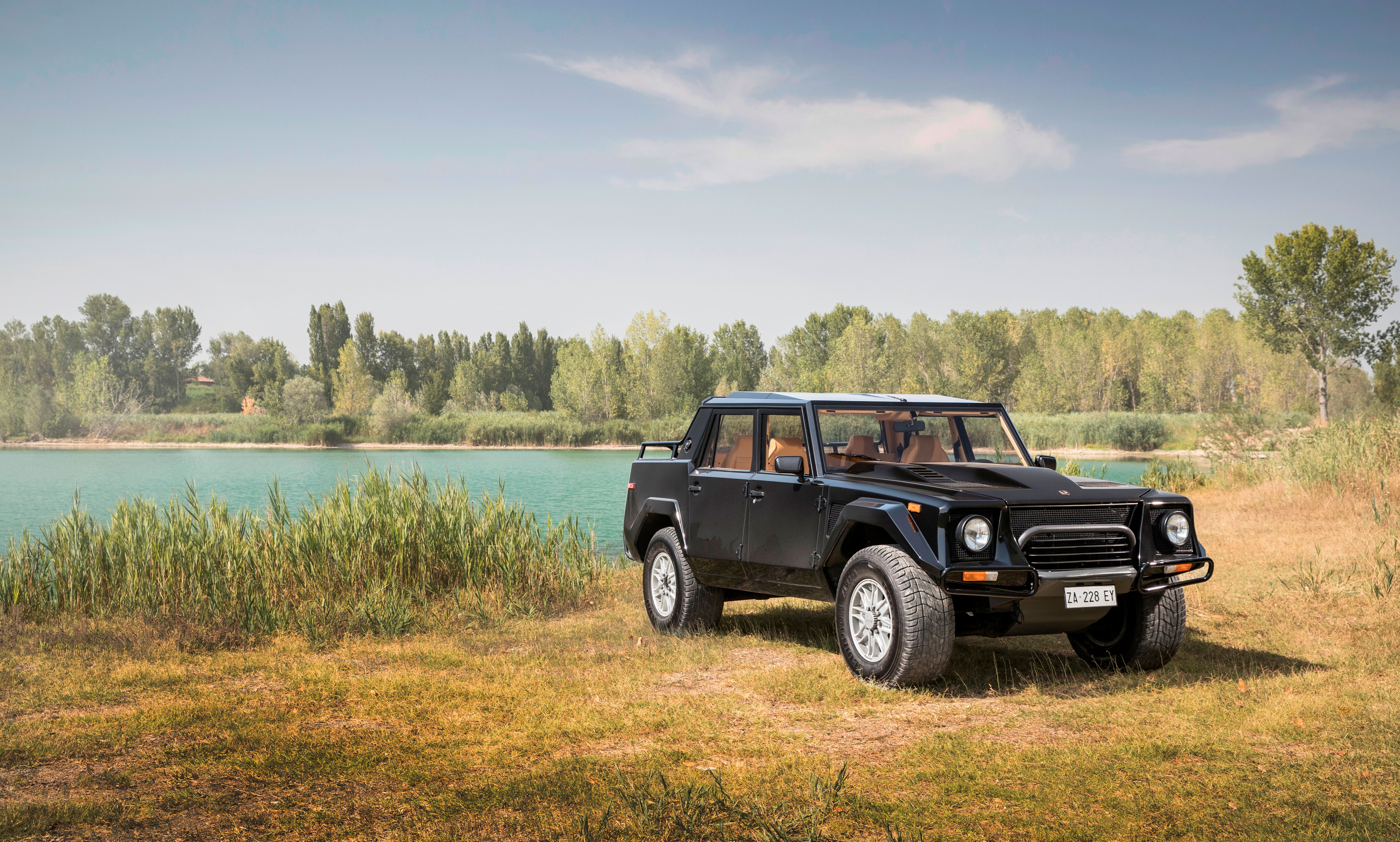Media | Articles
Lamborghini LM002: The bull that raged off-road
Lamborghini’s history is full of ups and downs, ownership changes, and off-the-wall projects. But when you think about Sant’Agata Bolognese’s most out-of-left-field idea, the LM002—that hulking beast-box of an off-roader—is the clear champion. As Lamborghini prepares to introduce the Urus SUV, let’s dig in and remember the bonkers bull that first blazed the trail.
The genesis of the LM002 begins in the late 1970s, when Lamborghini was chasing a contract from the United States military to build a next-generation off-roader. The resulting prototype, developed under U.S.-based Mobility Technology International and built in California in 1977, was a brutish-looking monster with a rear-mounted Chrysler V-8. It used a fiberglass body and a three-speed automatic transmission. Despite being named the Cheetah, the all-terrain prototype was, nonetheless, too heavy, slow, and clumsy to win the contract that eventually would go to AM General and its now-iconic Humvee.
20171017174917)
20171017175407)
20171017174616)
20171017175601)
Undeterred, Lamborghini funneled its resources instead into a production model. Four years later, a concept was ready, spearheaded under the supervision of engineer Giulio Alfieri. This time turning to an AMC-sourced V-8, Lamborghini unveiled the LM001 concept at the 1981 Geneva auto show. The buzz was huge, but there was still a problem—the rear-engine layout continued to constrain handling behavior.
Marketplace
Buy and sell classics with confidence
In preparation for the ’82 Geneva show, Lamborghini got to work on the LMA002 concept. Starting with clean-sheet chassis design, engineers moved the engine up front, and for good measure, chucked the V-8 in favor of the Countach’s 450-hp V-12.
It was time to start cooking with gas. By the time the production model launched in 1986, Lamborghini had worked out the kinks. For the body, the production LM002 used aluminum and fiberglass panels. And the driveline was off-road-ready with a five-speed manual transmission, four-wheel-drive transfer case, and three self-locking differentials. Pirelli supplied specially developed Scorpion tires. The Italian monstrosity, bodied in a facility outside of Bilbao, Spain before final assembly at Lambo’s Sant’Agata Bolognese home, could accelerate to 62 mph in 7.8 seconds on its way to a staggering top speed of 130 mph. At the same time, gradients greater than 120 percent were no obstacle.
Test drivers at the time loved it. “There were no rivals on the street for this kind of vehicle…it was extreme,” recalls development driver Cosimo Nasole, in a statement. “You could go in and out of ditches and into country fields and go on having fun. It transmitted emotions, pure emotions. [It was] a real Lamborghini, full stop.”
Between 1986 and the end of production in 1992, 300 LM002s rolled off the line, according to Lamborghini. While tough to find in the wild, there is always one LM002 at the Lamborghini Museum in Sant’Agata, chassis #12231. To this day it remains one of the most outrageous avenues Lamborghini has ever pursued, and that’s saying something from the company that brought us the Countach and the Diablo.
Rage on, LM002. May the Urus be even a tenth as absurd.









20171017175040)
20171017174937)
20171017174723)
20171017174810)
20171017174200)
20171017174330)
20171017174318)
20171017174347)
20171017174419)
20171017174435)
20171017174639)
20171017174709)
20171017174828)
20171017174847)
20171017174955)
20171017175009)
20171017175151)
20171017175208)
20171017175243)
20171017175432)
20171017175447)
20171017175651)
20171017174600)

